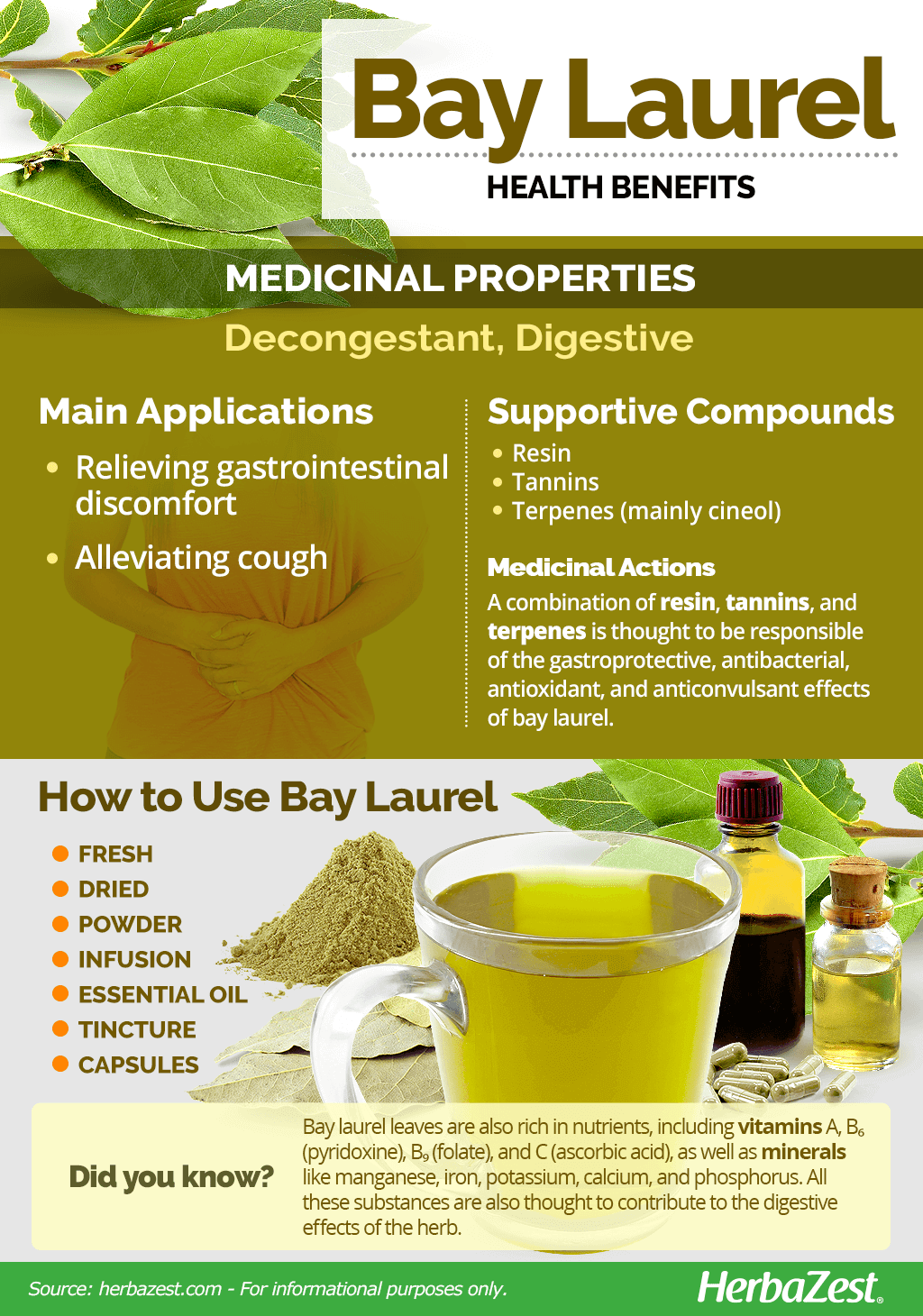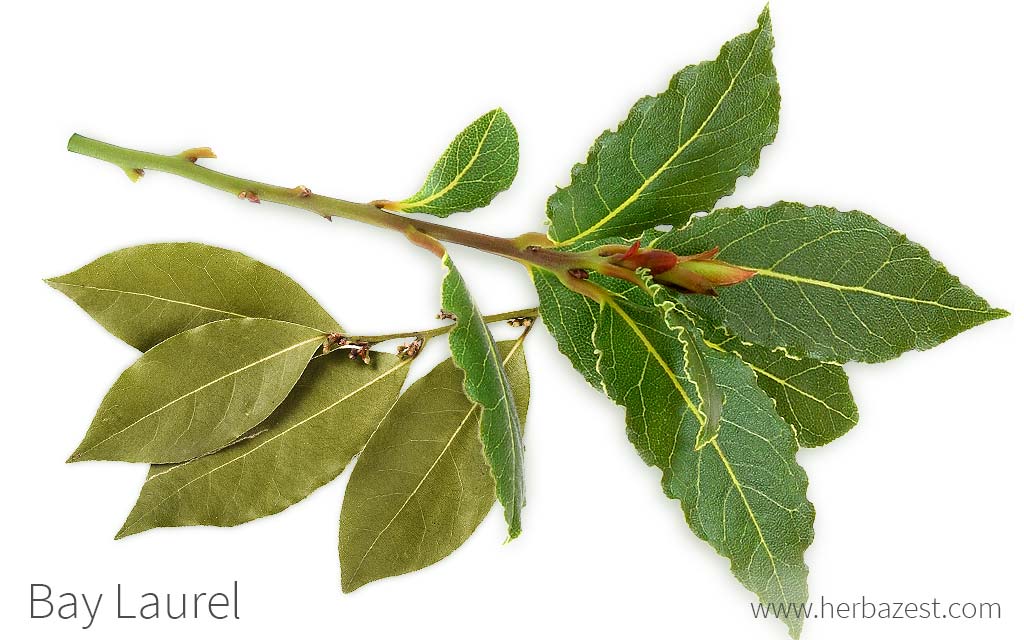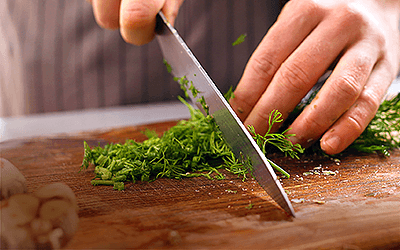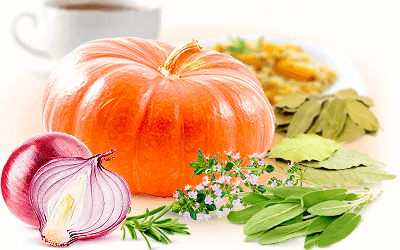In both Greek and Roman mythology, bay laurel was a symbol of divinity, imbued with protective and healing powers. It was also used in these ancient cultures for divination purposes and as an important sign of status.
Bay Laurel Medicinal Properties
Health Benefits of Bay Laurel
While bay laurel has been used traditionally in many parts of the world, its medicinal properties are only now being studied in-depth. Preliminary studies suggest the following bay laurel benefits:
Relieving gastrointestinal discomfort. Bay laurel benefits has been shown to settle the stomach by reducing contractions of the intestinal muscle, being particularly helpful for treating diarrhea.
Alleviating cough. The antispasmodic and antitussive properties of laurel have long been used to eliminate mucus from the respiratory tract in infectious processes.
How It Works
Bay laurel leaves contain volatile oil that is comprised of several different micronutrients, including tannins and resin. In addition, terpenes - namely cineole - are present.
It has been shown that bay laurel leaf extracts have gastroprotective, antibacterial, antioxidant, and anticonvulsant effects, which are attributed to a combination of laurel's main compounds; however, more research is required to determine its mechanisms of action.
Bay laurel leaves also contain a vast amount of nutrients, including vitamins A, B₆ (pyridoxine), B₉ (folate), and C (ascorbic acid), as well as minerals like manganese, iron, potassium, calcium, and phosphorus. All these substances are also thought to contribute to the digestive effects of the herb.
Bay laurel can improve digestion by aiding in the break down and absorption of food.
Similar decongestant properties can be found in eucalyptus and myrtle, whereas elecampane, dill and fennel also help improve digestion.
Bay Laurel Side Effects
Bay laurel is mostly safe for consumption. However, bay laurel's essential oil should never be consumed orally due to risk of toxicity.
Likewise, sensitive individuals may experience an allergic reaction, usually manifested as a general skin irritation following topical application of bay laurel's oil, so it must always be properly diluted.
- Medicinal action Decongestant, Digestive
- Key constituents Resin, tannins, terpenes (particularly cineole)
- Ways to use Capsules, Hot infusions/tisanes, Food, Tincture, Powder, Essential oil, Dried
- Medicinal rating (3) Reasonably useful plant
- Safety ranking Safe
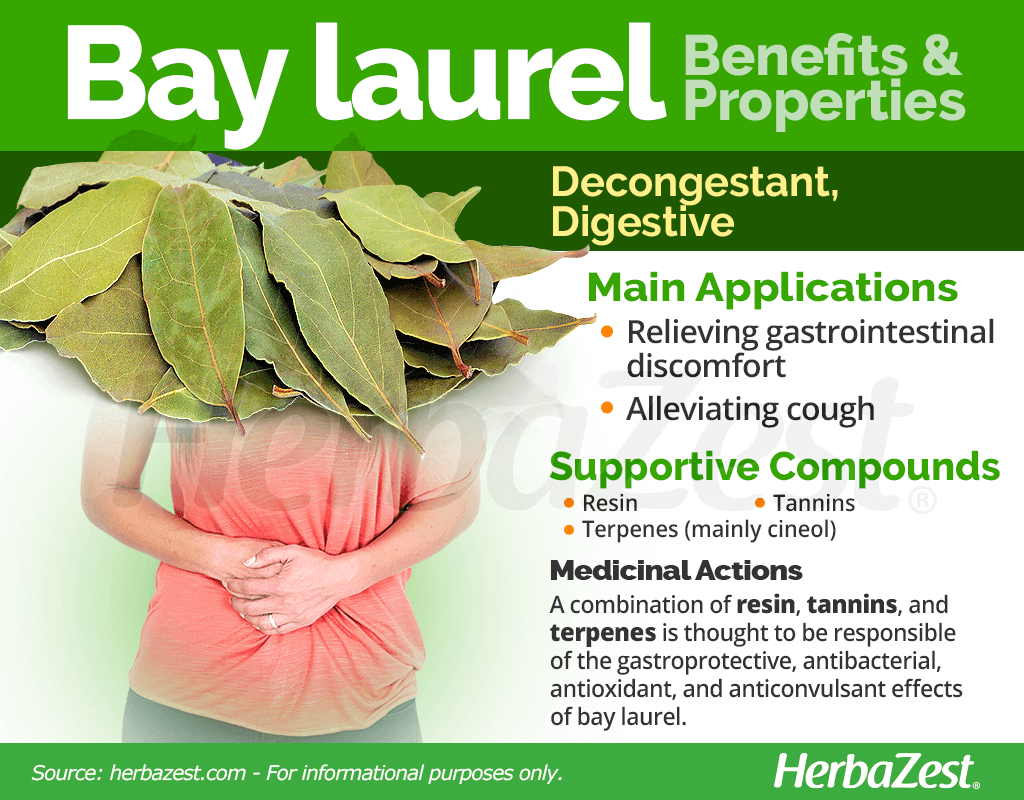
How to Consume Bay Laurel
Though it is more commonly used for culinary purposes, the best way of reaping the health benefits of bay laurel, or bay leaf, is through medicinal preparations.
Natural Forms
Raw. In certain dishes like stews and meats, a couple of fresh or dried bay leaves are added for flavor. When used in this way, bay is said to help in the digestion process.
- Infusion. A warm infusion of bay laurel leaves can soothe stomach discomfort and aid digestion.
Herbal Remedies & Supplements
Essential oil. Traditionally, bay leaf essential oil is properly diluted to 2% in a carrier oil and then rubbed on aching joints and muscles. It is also used in aromatherapy. Due to its toxicity, bay laurel oil should not be ingested.
Tincture. A concentrated form of the herb that is obtained by submerging the crushed leaves in a neutral alcohol. This solution should be diluted in a glass of warm water in order to alleviate indigestion.
Capsules. While uncommon, capsules filled with dried, powdered bay laurel can be taken as a supplement.
- Edible parts Leaves
- Edible uses Condiment
- Taste Aromatic
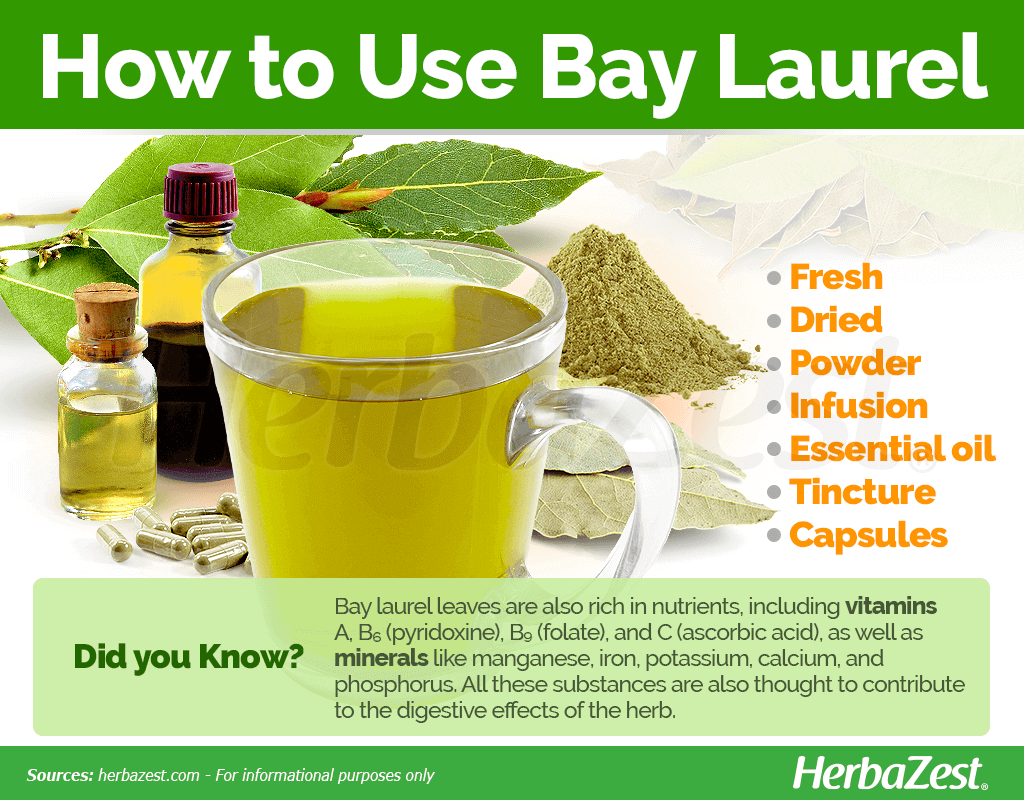
Growing
Bay Laurel (Laurus nobilis) is an evergreen shrub that thrives in a wide range of conditions. Because of its hardy nature and ornamental appeal, bay laurel is a common sight in landscapes and home gardens.
Growing Guidelines
Bay laurel is considered one of the hardier herbs, surviving in almost any type of soil and all but severe winter temperatures below 23°F (-5°C) and harsh maritime winds.
Partial shade is ideal, and a controlled-release fertilizer is also recommended to accelerate growth.
It may take seeds up to six months to propagate after an early-autumn planting, but mature side-shoots can be cut and used early on.
The plant itself is highly resistant to disease.
If seeds are required, both male and female plants must be grown.
- Life cycle Perennial
- Harvested parts Leaves
- Light requirements Partial shade
- Soil Well-drained
- Growing habitat Temperate climates
- Planting time Fall
Additional Information
Plant Biology
Standing up to 70 feet (20 m) tall, bay laurel is deciduous tree that features leathery, dark green leaves and small, yellowish white flowers that grow in clusters. On female specimens, these flowers later turn into black, shiny berries resembling olives. Leaves contain the majority of its applicable value and are the most widely used part of the plant.
Classification
A member of Lauraceae, or the laurel family, Laurus nobilis, also known as bay laurel, sweet laurel, Indian bay, laurel tree, among other names, is one of over 3,000 species of flowering plants in this group, including cinnamon (Cinnamomum verum) and avocado (Persea americana).
Varieties and Subspecies of Bay Laurel
There are many cultivars of bay laurel; however, among the most well-known varieties are L. nobilis var. angustifolia, or narrow-leaved bay, with long, narrow, and lustrous dark green leaves, which is hardy in cooler regions; and L. nobilis var. aurea, or golden bay, with yellow-gold foliage that fades in color during the summer and it is highly valued as an ornamental shrub.
Historical information
The bay leaf or bay laurel small tree is native to Asia Minor and the Mediterranean region1, where it has been used for culinary, medicinal and ceremonial purposes for millennia.
In Greek mythology, Apollo, the god of light, cleansed himself with bay laurel branches after slaying a dragon2, and bay laurel tree leaves were thought to ward humans from evil and give them glimpses of the future. In fact, the famous Apollo's oracle at Delphy used the alleged prophetic powers of bay laurel, and the island's temples were decorated with bay laurel branches.
In Ancient Rome, pairs of bay laurel trees guarded sanctuaries, while bay laurel garlands were used to honor gladiators, soldiers, athletes, and poets.
The term "laureate" is rooted in the Roman tradition of honoring preeminent citizens with laurel garlands and, up to the present day, continues to indicate a position of prestige.
These connotations remained with the herb well through the beginnings of Christianity and up until the 18th century,when it became common practice in England to scatter the leaves on the floors of distinguished houses. It was around this time that culinary use also became more usual.
Economic Data
Bay laurel may have transitioned in chief importance over the years from herbal medicine to culinary seasoning, but its cultivation still represents a major part of the agricultural crop industry in many countries - particularly Turkey, which leads production, providing 90% of the world's supply. In 2011, the nation generated over 8,900 tons of the herb totaling approximately $26,000 USD. Its value is expected to continuing rising in the future. The United States, Hong Kong, and Brazil import the largest quantity, but its value as an ornamental plant reaches across the globe.
Other Uses
Gardening. Because of its fragrant scent and herbal possibilities, bay laurel has become a well-beloved ornamental plant around the world, growing with tolerable success in a wide range of zones.
Cosmetics. Its essential oil is sometimes used in the aesthetics industry, appearing in both soaps and perfumes in combination with other aromas.
Insecticide. Bay laurel's essential oil makes a powerful insect repellent.
Carpentry. Historically, the wood of the tree can additionally be carved into walking sticks and other small articles, valued for their durability.
- Other uses Cosmetics, Furniture/carpentry, Perfume, Repellent, Soapmaking
Sources
- Cough, Efficacy of cineole in patients suffering from acute bronchitis: a placebo-controlled double-blind trial, 2013
- Natural Product Research, Essential oil composition and variability of Laurus nobilis L. growing in Tunisia, comparison and chemometric investigation of different plant organs, 2009
- Union County College, UCC Biology Department: Plant of the Week: Laurel
- Encyclopedia of Herbal Medicine, pp. 225-226
- Journal of Medicinal Food, Antidiarrheal activity of Laurus nobilis L. leaf extract in rats, 2012 ; Gastroprotective effect and antioxidant properties of different Laurus nobilis L. leaf extracts, 2011
- Medicinal Plants of the World, p. 188
- Phytomedicine, Anticonvulsant activity of the leaf essential oil of Laurus nobilis against pentylenetetrazole- and maximal electroshock-induced seizures, 2002
- Royal Horticultural Society, Bay Tree (Laurus nobilis)
Footnotes:
1. Kiple, K.F.; Coneè, K. (2000). The Cambridge World History of Food, Volumen 2, Massachusetts: Cambridge University Press. Available from Google Books
2. Heilmeyer, M. (2007). Ancient herbs. NY: J. Paul Getty Museum. Available from Google Books
